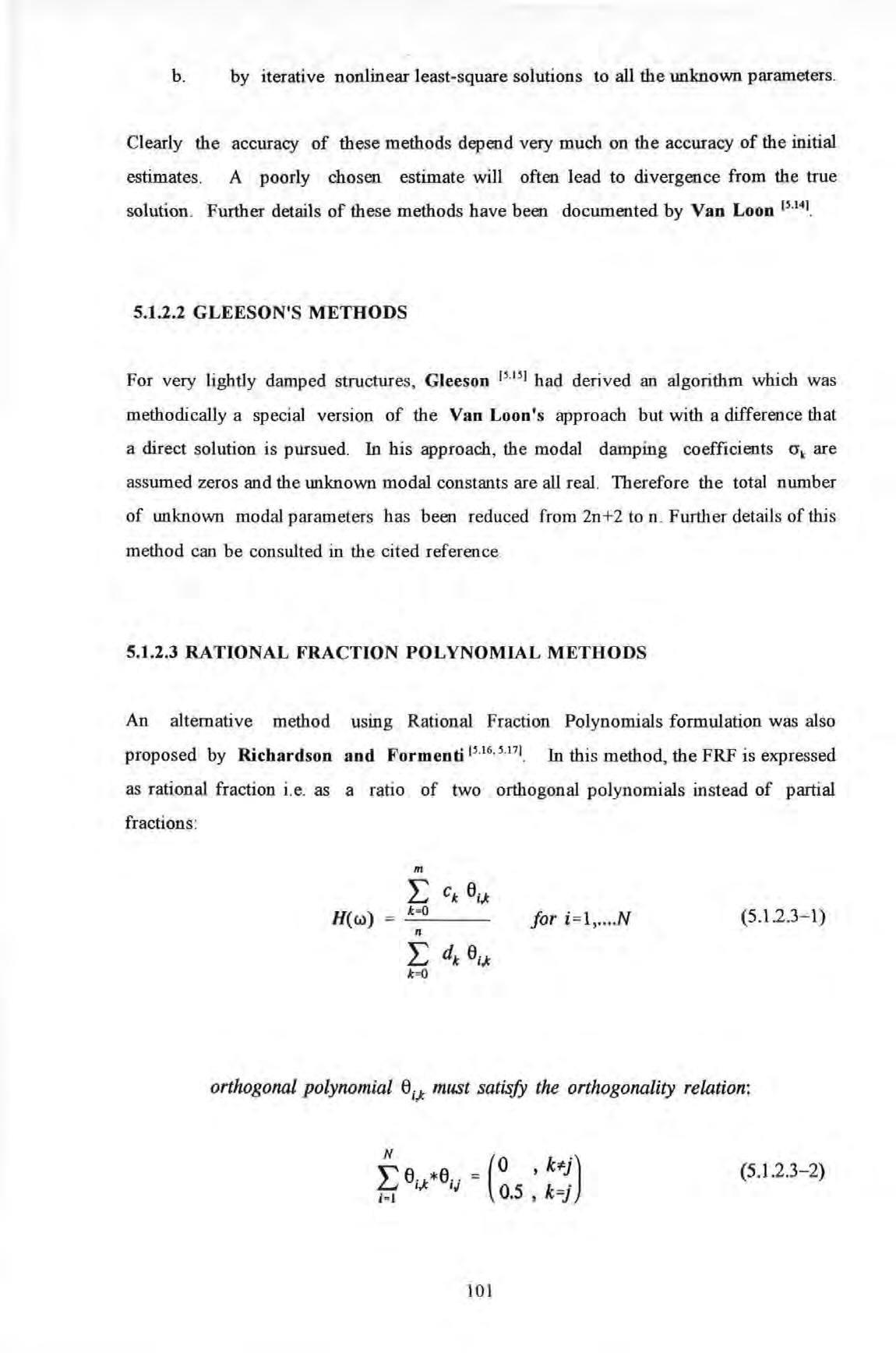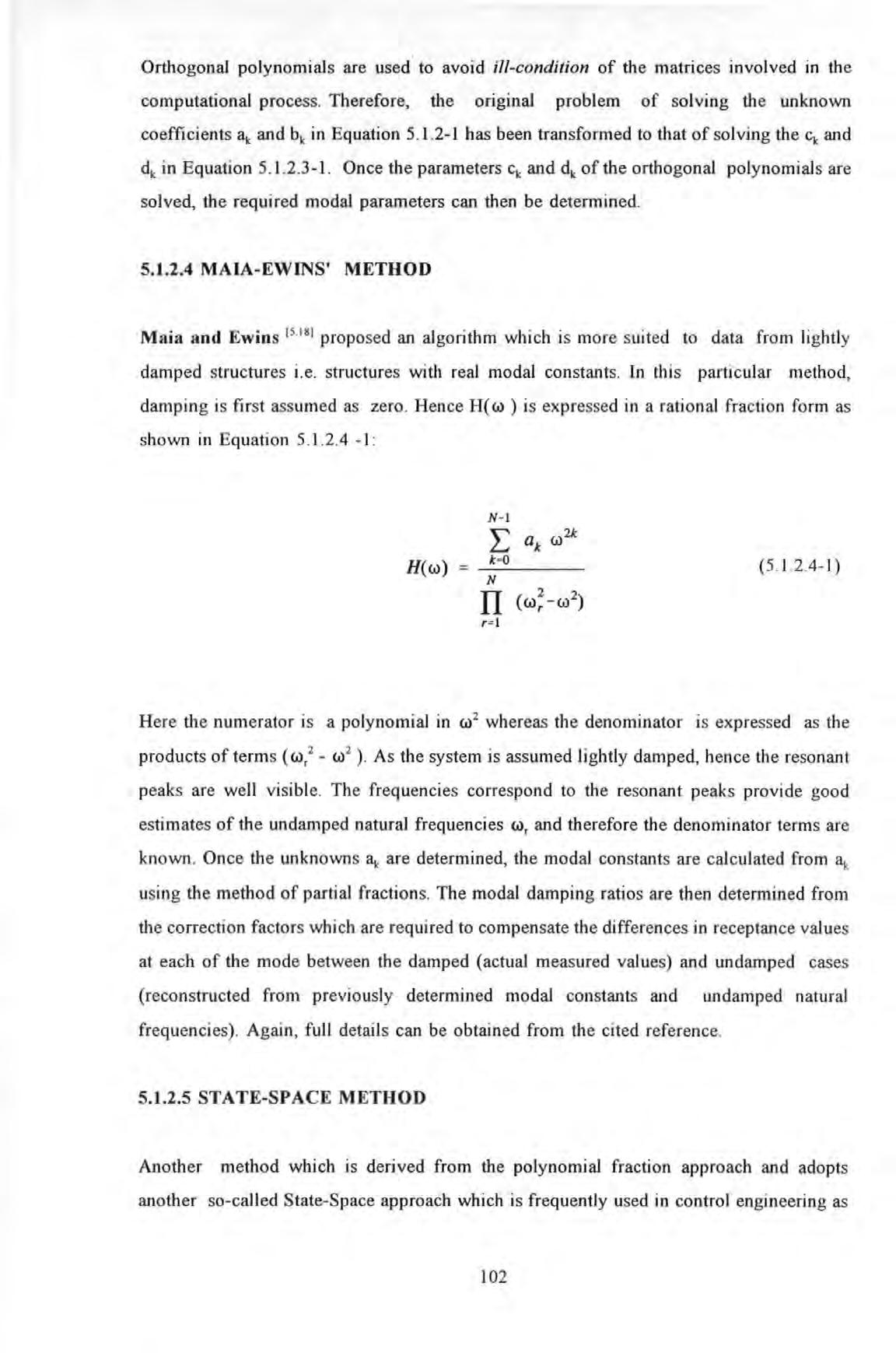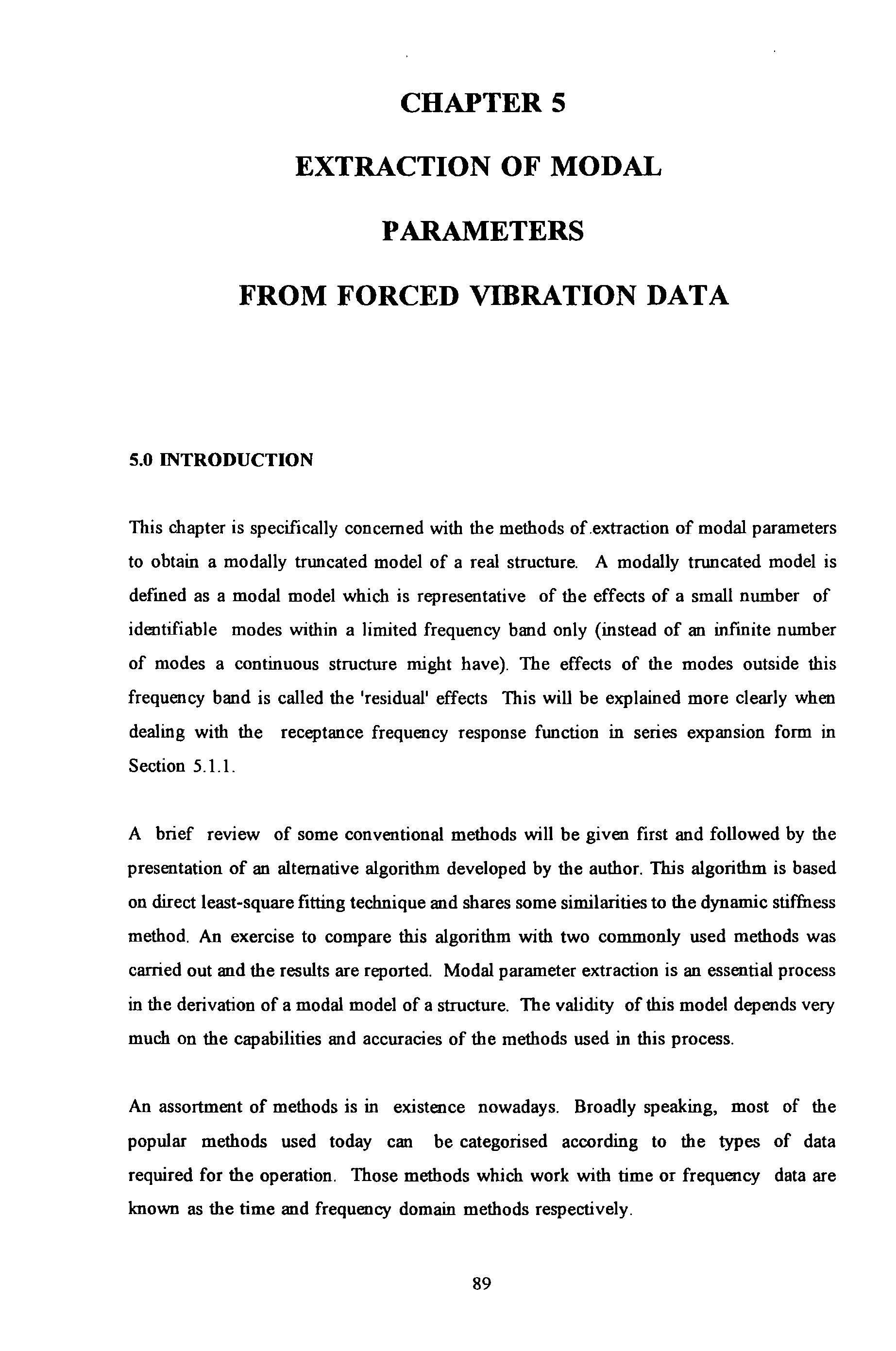
3 minute read
5.1.2.1 PARTIAL FRACTION METHODS
from Technique of Determination of Structural Parameters From Forced Vibration Testing
by Straam Group
As a natural extension to the formulation in Equation 5.1.2-1, it can be rewritten in terms of partial fractions : where where crk and are damping coefficient and damped natural frequency respectively .
This approach again has a very strong origin from control engineering It is evident from Equation 5 .1.2. 1-1 that this equation contains 2n+2 unknown parameters : rk> r·k and p ·k for each of the n modes within the analyzed frequency band together with two residual parameters accounting for the residual effects of the out- of-range modes .
Advertisement
A number of approaches are available to solve the parameters from these equations . It is noticed that receptance FRF possess a linear relationship with the unknown constants and r·k but a non-linear relationship with and p·k (i e the damped natural frequencies rok and the damping coefficients From these Equations, two strategies can be formulated : a . by a linear least-square solution of the 2n +2 unknown parameters, using initial estimates as determined by some other methods ; or b. by iterative nonlinear least-square solutions to all the unknown parameters.
Clearly the accuracy of these methods depend very much on the accuracy of the initial estimates. A poorly chosen estimate will often lead to divergence from the true solution. Further details of these methods have been documented by Van Loon IH41
5.1.2.2 GLEESON'S METHODS
For very lightly damped structures , Gleeson 15 151 had derived an algorithm which was methodically a special version of the Van Loon's approach but with a difference that a direct solution is pursued. In his approach , the modal damping coefficients ak are assumed zeros and the unknown modal constants are all real . Therefore the total number of unknown modal parameters has been reduced from 2n+2 ton . Further details of this method can be consulted in the cited reference.
5.1.2.3 RATIONAL FRACTION POLYNOMIAL METHODS
An alternative method usmg Rational Fraction Polynomials formulation was also proposed by Richardson and Formenti this method, the FRF is expressed as rational fraction i.e. as a ratio of two orthogonal polynomials in stead of partial fractions
Orthogonal polynomials are used to avoid ill-condition of the matrices involved in the computational process. Therefore, the original problem of solving the unknown coefficients ak and in Equation 5.1.2-l has been transformed to that of so lving the dk in Equation 5 . 1.2.3 -I. Once the parameters and d k o f the orthogonal polynomial s are solved, the required modal parameters can then be determined .
5.1.2.4 MAIA-EWINS' METHOD
Maia and Ewins 15 18 1 proposed an algorithm which is more s uite d to data from li g htl y damped s tructures i.e structures with real modal constants In thi s particular method, damping is first assumed as zero Hence H( w ) is expressed in a rational fraction form as s hown in Equation 5 . 1.2.4 -1 :

Here th e numerator is a polynomial in w2 whereas the denominator is exp ressed as the products of terms ( w/ - w 2 ) As the system is assumed li g htly damped , h ence the reso nant peaks are well visib le The frequencies correspond to the reso nant peaks provide good estimates of th e undamped natural frequenc ies w, and therefore the denominator terms are known . Once the unknown s are determined, the modal constants are calculated from ak usi ng the method of parti a l fractions . The modal dampin g ratio s are then determined from the correction factors which are required to compensate the differences in receptance values at each of the mod e between the damped (actual measured values) and undamp ed cases (reconstructed from prev iously determined modal constants and undamp e d natural frequencies) Again , full details can be obtained from the cited reference
5.1.2.5 STATE-SPACE METHOD
Another method which is derived f rom the polynomial fraction approach and adopts another so-called State-Space approach which is frequently used in control engineerin g as well In this method, the system equations are recast into a first order state-space formulation instead of the usual second order formulation (a technique which has already been reviewed in Section 3.2.2.2.5) .
Equation 5 1.2.5-1 is obtained by adding a set of auxiliary Equations 5 1.2 5-4, instead of Equations 3 .2 .2.2 .5-19 as used before:
The method works by determining the system matrix [D) from the steady state frequency responses (using sinusoidal excitation). The complex Eigen-parameters of the system matrix [D] are then determined using methods such as singular value decomposition and from these Eigen-parameters the modal parameters can be deduced. More details can be found in a paper by Metwalli 15 191
5.1.2.6 FREQUENCY DOMAIN POLY -REFERENCE METHOD
A frequency domain verswn of the Poly-reference method (as a contrast to the time-domain one) was also developed by Zhang et al. 15 201 As this method is quite involved in theory , readers are recommended to consult the cited references for more details .










